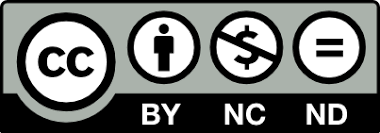Ġvino, Wine, Vino ─ The Study of Linguistic Landscape in Tbilisi
DOI:
https://doi.org/10.55804/jtsu2346-8149.2025.09.05Keywords:
linguistic landscape, LL, multilingualism, language policy, language planningAbstract
This study investigates the linguistic landscape of Tbilisi’s city centre, with a particular focus on the visibility and spatial distribution of Georgian, English, and Russian across public signage. As a rapidly globalizing urban space with a complex sociolinguistic history, Tbilisi offers a compelling case for examining how language is used in public settings and what this reveals about identity, power relations, and sociopolitical dynamics in contemporary Georgia. The research aims to explore the symbolic and communicative roles of these three languages in the city’s central and touristically attractive areas, where commercial and cultural activity is dense and language use is often strategic.
The study adopts a mixed-methods approach that combines quantitative analysis with qualitative interpretation. The dataset comprises 45 photographs of business signs, restaurant menus, and graffiti collected through purposive sampling in Tbilisi's urban core. The images were selected based on their diversity of language use, visibility, and relevance to both local and tourist audiences. Each image was analysed using a set of linguistic landscape analytical criteria, including language prominence, script type, placement, and intended audience. Special attention was paid to whether languages appeared monolingually or multilingually, and how language choice might reflect broader economic or political motivations.
Findings indicate that English has become the most prominent language in Tbilisi’s city centre signage, often appearing independently or as the primary language in multilingual signs. This dominance reflects English’s global status and the growing emphasis on tourism, international business, and modernity. Georgian, despite being the official state language and a central component of national identity, more often appears alongside English rather than as a standalone medium, particularly in commercial contexts. This pattern raises important questions about the symbolic status of the Georgian language in spaces of high visibility and economic activity. Russian, once a dominant language in public and private domains during the Soviet era, now appears less frequently, reflecting both shifts in language policy and demographic changes, including decreased Russian-speaking populations and evolving political relationships.
This research contributes to the growing field of linguistic landscape studies by offering empirical evidence from a post-Soviet, multilingual context. It highlights how language in public spaces is not only a matter of communication but also a reflection of broader sociocultural hierarchies, economic forces, and political ideologies. The study’s findings have implications for language policy, urban planning, and debates surrounding cultural identity in Georgia and comparable transitional societies.
References
Ben-Rafael, E., Shohamy, E., Amara, M. H., & Trumper-Hecht, N. (2006). Linguistic Landscape as Symbolic
Construction of the Public Space: The Case of Israel. International Journal of Multilingualism, 3(1), 7-30.
Blommaert, J. (2010). The Sociolinguistics of Globalization. Cambridge University Press
Cenoz, J., & Gorter, D. (2006). Linguistic Landscape and Minority Languages. International Journal of
Multilingualism, 3(1), 67-80.
Gorter, D. (2006). Linguistic Landscape: A New Approach to Multilingualism. Multilingual Matters.
Kucera, J. (2024, January 23). Georgia’s wartime Russians are beginning to leave. Davis Center Harvard
University. https://daviscenter.fas.harvard.edu/insights/georgias-wartime-russians-are-beginning-leave
Landry, R., & Bourhis, R. Y. (1997). Linguistic Landscape and Ethnolinguistic Vitality: An Empirical Study.
Journal of Language and Social Psychology, 16(1), 23-49.
Law of Georgia on official language. (2015). https://matsne.gov.ge/en/document/download/2931198/0/en/pdf.
National Statistics Office of Georgia. (2025). Tourism statistics: I quarter of 2025. https://www.geostat.
ge/en/modules/categories/160/tourism
National Statistics Office of Georgia. (2025). Tourism statistics: 2024 summary. https://www.geostat.
ge/en/modules/categories/160/tourism
Piller, I. (2003). Advertising as a Site of Language Contact. Annual Review of Applied Linguistics, 23, 170-183
Scollon, R., & Scollon, S. W. (2003). Discourses in Place: Language in the Material World. Routledge.
Totibadze, S., Smakman, D., Rameh, S., Voges, L., & McCracken, M. (2018, June 11). Amsterdamse eettentjes
Gebruiken Nog Minder Nederlands Dan Chinees. Redactie Neerlandistiek. https://neerlandistiek.
nl/2018/06/taalkundige-hoogstandjes-in-culinair-amsterdam-rotterdam-en-den-haag/
Downloads
Published
How to Cite
Issue
Section
License
Copyright (c) 2025 Authors Retain All Rights. Online Journal of Humanities ETAGTSU Has Only the Right of the First Publication.

This work is licensed under a Creative Commons Attribution-NonCommercial-NoDerivatives 4.0 International License.












